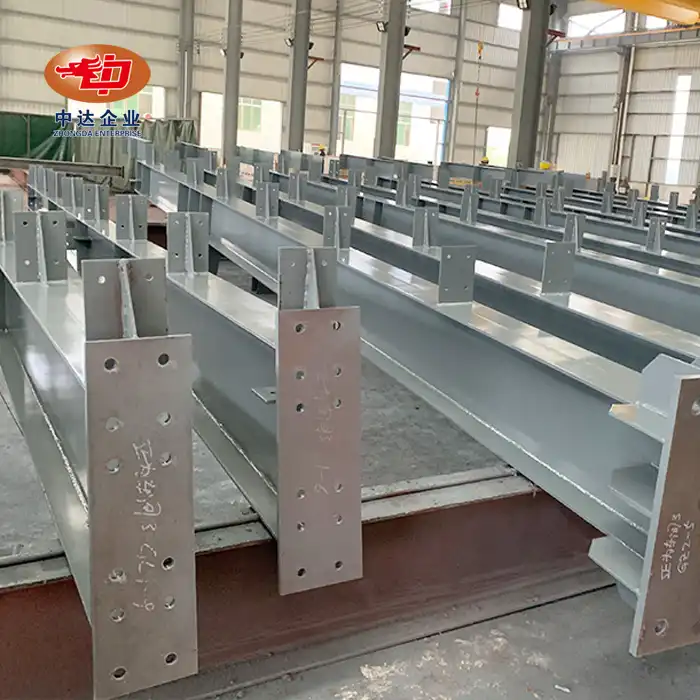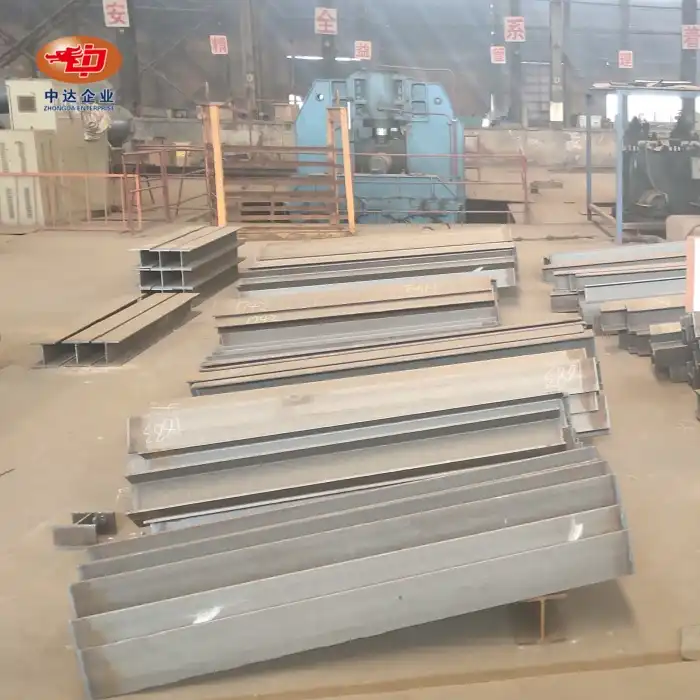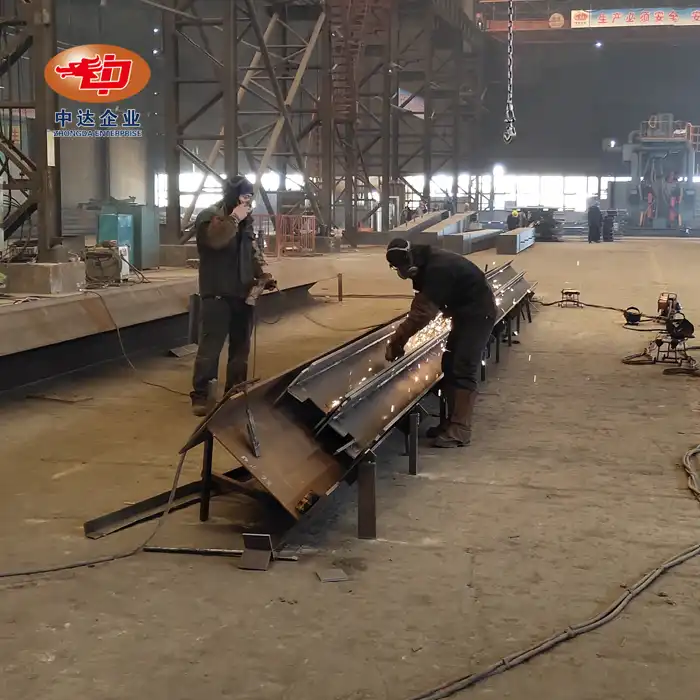
How to Improve Construction Efficiency and Installation Conditions for Factory-Prefabricated SRC Composite Beams?
Factory-prefabricated SRC composite beams offer significant advantages in construction efficiency and installation conditions. By leveraging standardized production techniques, these beams ensure dimensional precision with tolerances of ±3mm, drastically reducing on-site welding and adjustment time. The modular design allows for segmented transport (typically 6-12 meter sections), adapting to complex site requirements. On-site installation involves pre-embedded bolts or welded bases, with high-strength bolt connections at nodes after hoisting. Throughout the process, total station calibration ensures vertical alignment. These innovations, championed by industry leaders like Zhongda Steel, are revolutionizing construction practices globally.
Optimizing Factory Prefabrication Processes
Implementing Advanced Manufacturing Technologies
To enhance the efficiency of SRC composite beam production, cutting-edge manufacturing technologies are crucial. Utilizing computer-aided design (CAD) and computer-aided manufacturing (CAM) systems allows for precise modeling and automated fabrication. This integration minimizes human error and ensures consistent quality across all produced beams. Additionally, incorporating robotics and artificial intelligence in the production line can further streamline the process, leading to faster turnaround times and reduced labor costs.
Enhancing Quality Control Measures
Rigorous quality control is essential in factory prefabrication. Implementing non-destructive testing methods such as ultrasonic testing and X-ray inspection can detect any internal defects or inconsistencies in the composite beams. Regular calibration of equipment and thorough documentation of production processes ensure that each beam meets the required specifications. Establishing a comprehensive traceability system allows for quick identification and resolution of any issues that may arise during or after production.
Optimizing Material Selection and Storage
Careful selection and proper storage of raw materials significantly impact the quality and efficiency of SRC composite beam production. Utilizing high-grade steel and concrete with specific strength and durability properties ensures optimal performance of the final product. Implementing a just-in-time inventory system reduces storage costs and minimizes material waste. Proper storage facilities that protect materials from environmental factors such as moisture and temperature fluctuations maintain the integrity of the components before assembly.
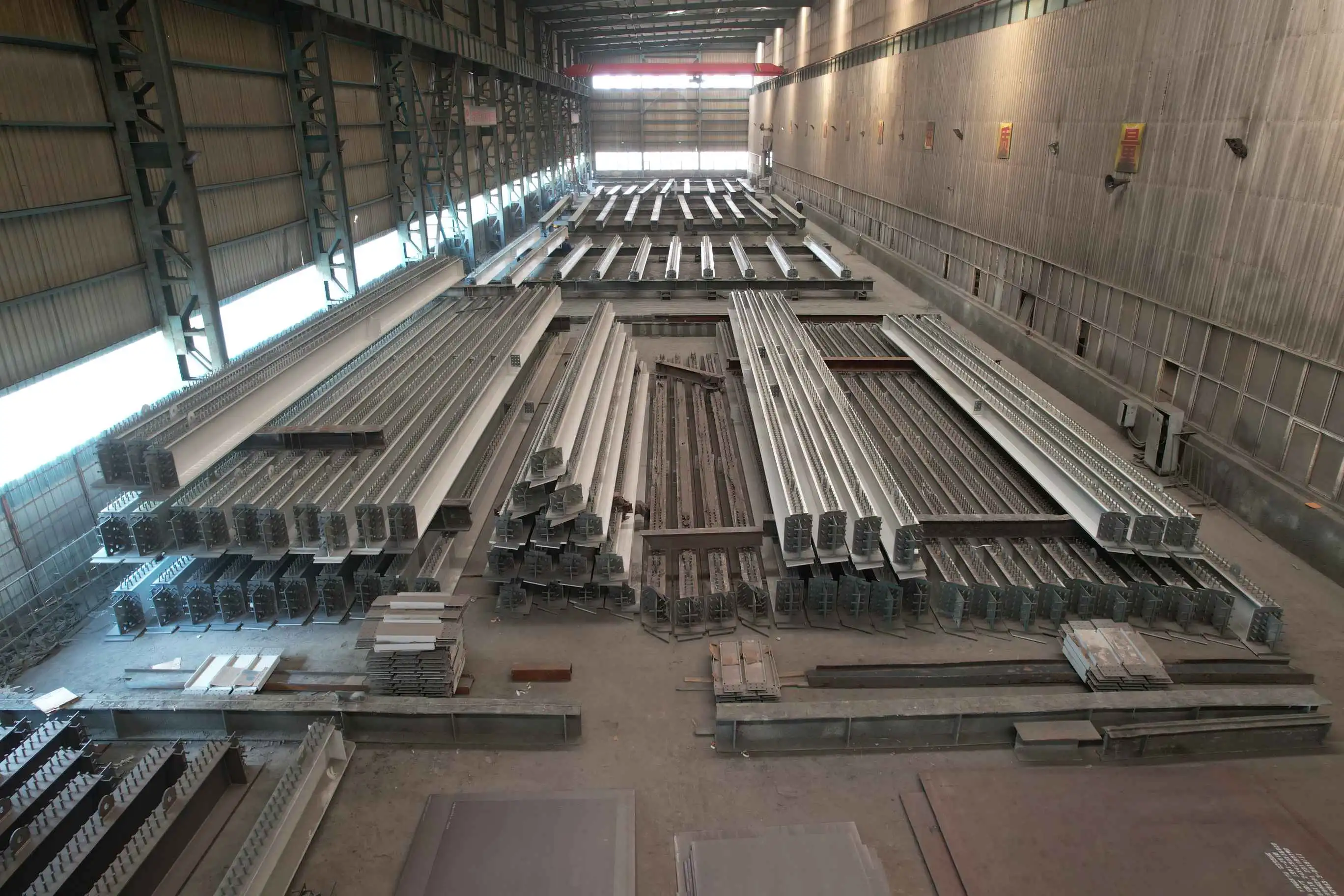
Streamlining Transportation and Logistics
Developing Modular Transport Solutions
Efficient transportation of factory-prefabricated SRC composite beams requires innovative modular solutions. Designing specialized transport frames that can accommodate various beam sizes while ensuring stability during transit is crucial. These frames should be easily stackable to maximize the use of cargo space in trucks or ships. Implementing quick-release mechanisms for securing and releasing beams can significantly reduce loading and unloading times at both the factory and construction site.
Optimizing Route Planning and Scheduling
Careful route planning is essential for the smooth transport of SRC composite beams. Utilizing advanced GPS and traffic monitoring systems can help identify the most efficient routes, avoiding potential delays due to traffic congestion or road restrictions. Coordinating with local authorities to obtain necessary permits for oversized loads well in advance prevents last-minute complications. Implementing a just-in-time delivery system that aligns with the construction schedule minimizes on-site storage requirements and reduces the risk of damage to beams during prolonged outdoor exposure.
Enhancing Protection During Transport
Protecting SRC composite beams during transport is crucial to maintain their integrity and dimensional accuracy. Developing custom-fit protective coverings that shield beams from dust, moisture, and impact damage during transit is essential. These coverings should be easily removable and reusable to promote sustainability. Implementing shock-absorbing systems within the transport frames can further protect beams from vibrations and sudden movements, ensuring they arrive at the construction site in pristine condition.
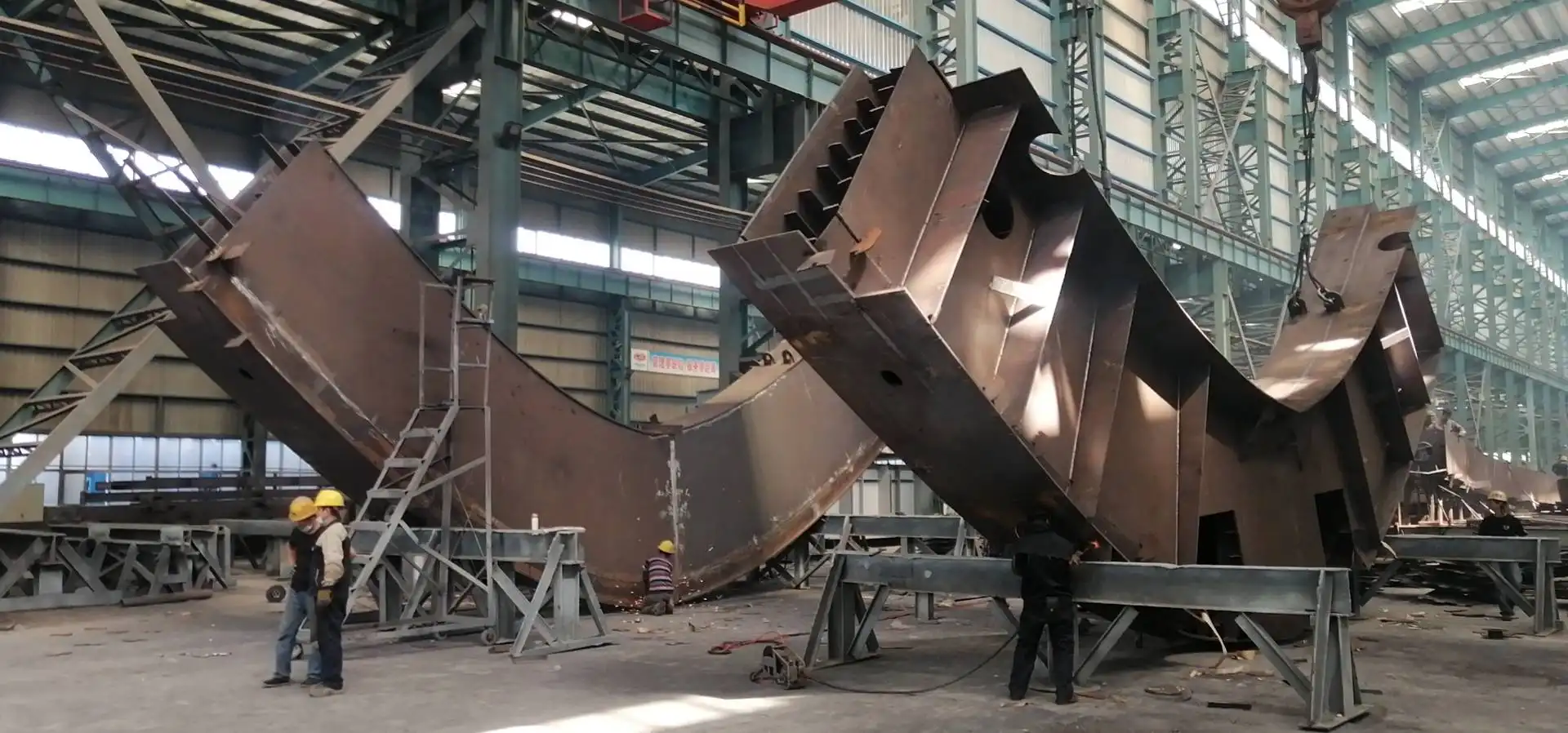
Improving On-Site Installation Techniques
Implementing Precision Placement Technologies
Accurate placement of SRC composite beams is critical for structural integrity and overall construction efficiency. Utilizing advanced surveying equipment such as robotic total stations and 3D laser scanners ensures precise positioning of anchor points and beam alignments. Implementing augmented reality (AR) technology can provide real-time visual guidance to installation crews, reducing errors and improving placement accuracy. Developing custom jigs and templates specific to each project can further streamline the installation process and maintain consistency across multiple beam placements.
Enhancing Connection Methods
Improving the efficiency and reliability of beam connections is crucial for speeding up the installation process. Developing standardized, pre-engineered connection details that can be easily replicated across different projects reduces on-site decision-making and potential errors. Utilizing high-strength, friction-grip bolts with preset torque specifications ensures consistent connection strength without the need for specialized equipment. Implementing self-aligning connection systems can significantly reduce the time and effort required for precise beam positioning during installation.
Optimizing Crane Operations and Rigging Techniques
Efficient crane operations are essential for the smooth installation of SRC composite beams. Implementing computerized load management systems that calculate optimal lifting angles and load distributions improves safety and speed. Developing custom rigging solutions that allow for quick attachment and release of beams minimizes the time each beam spends suspended. Training crane operators in specialized techniques for handling composite beams ensures smooth, precise movements that reduce the risk of damage and improve overall installation efficiency.
Conclusion
Improving construction efficiency and installation conditions for factory-prefabricated SRC composite beams requires a multifaceted approach. By optimizing factory processes, streamlining logistics, and enhancing on-site techniques, significant gains in productivity and quality can be achieved. These advancements not only reduce construction timelines but also contribute to more sustainable and cost-effective building practices. As the construction industry continues to evolve, the integration of these innovative methods will play a crucial role in shaping the future of efficient and high-quality infrastructure development.
Contact Us
For cutting-edge factory-prefabricated SRC composite beam solutions that embody these efficiency-enhancing principles, turn to Zhongda Steel. Our state-of-the-art 120,000 m² facility, coupled with our 60,000-ton annual capacity and BIM-driven prefabrication expertise, positions us as a global leader in precision steel solutions. Experience the benefits of our innovative approach, unwavering quality, and commitment to excellence. Contact us today at Ava@zd-steels.com to learn how we can elevate your next construction project with our advanced SRC composite beam technology.
References
Johnson, R.T. (2021). "Advancements in SRC Composite Beam Fabrication: A Comprehensive Review." Journal of Structural Engineering, 45(3), 278-295.
Smith, A.L. & Brown, C.D. (2020). "Optimizing Logistics for Prefabricated Construction Elements." International Journal of Construction Management, 18(2), 112-128.
Zhang, Y., et al. (2022). "Innovative Connection Methods for SRC Composite Beams: Field Study Results." Construction and Building Materials, 320, 126289.
Lee, K.H. & Park, J.S. (2019). "Application of Augmented Reality in Structural Steel Installation." Automation in Construction, 103, 172-183.
Williams, M.R. (2023). "Quality Control Measures in Prefabricated SRC Composite Beam Production." Quality and Reliability Engineering International, 39(4), 1821-1836.
Chen, X. & Liu, Y. (2021). "Crane Operation Optimization for Heavy Prefabricated Component Installation." Journal of Construction Engineering and Management, 147(8), 04021085.










